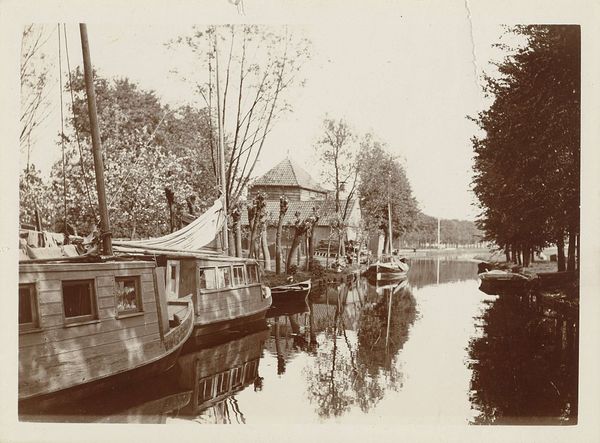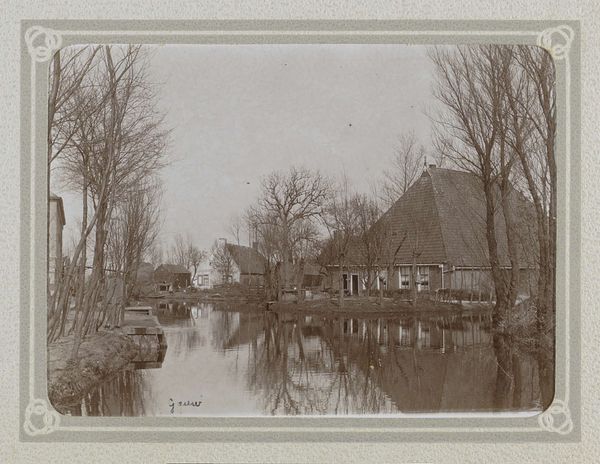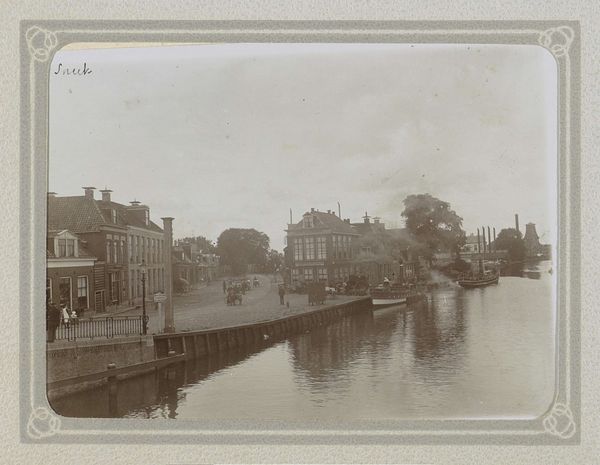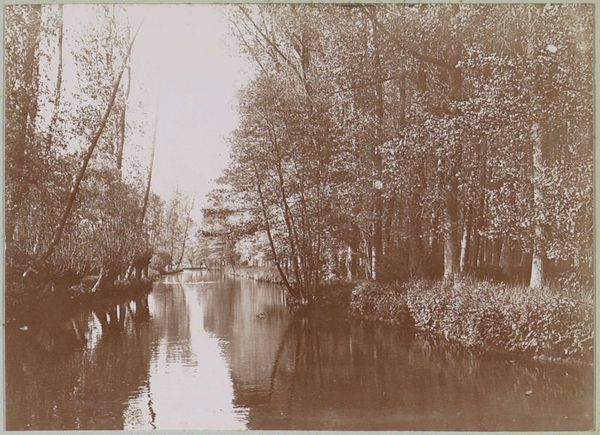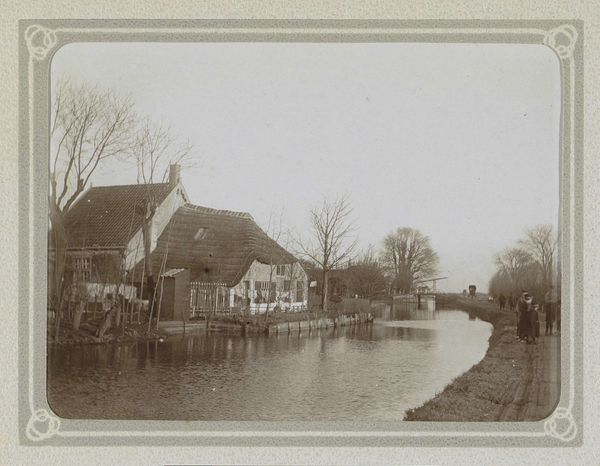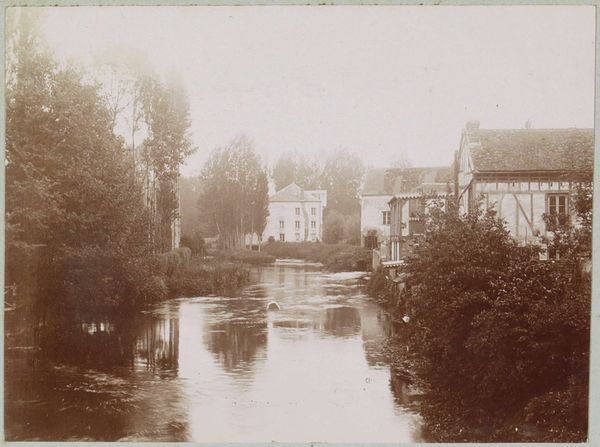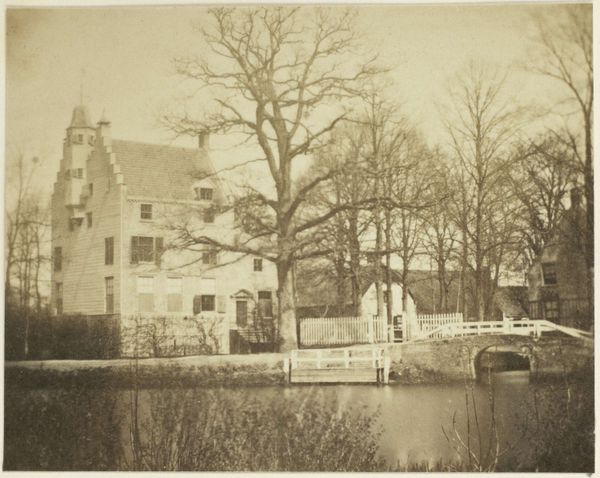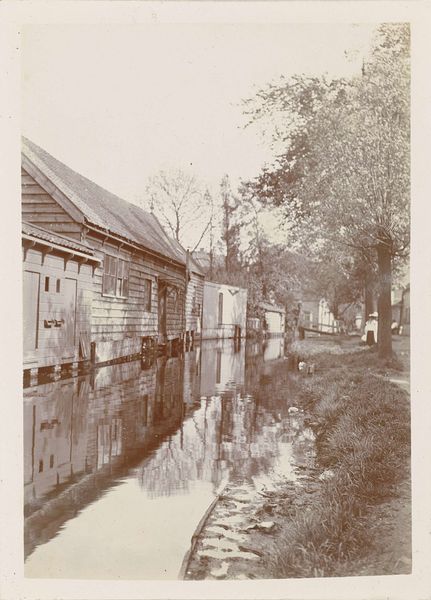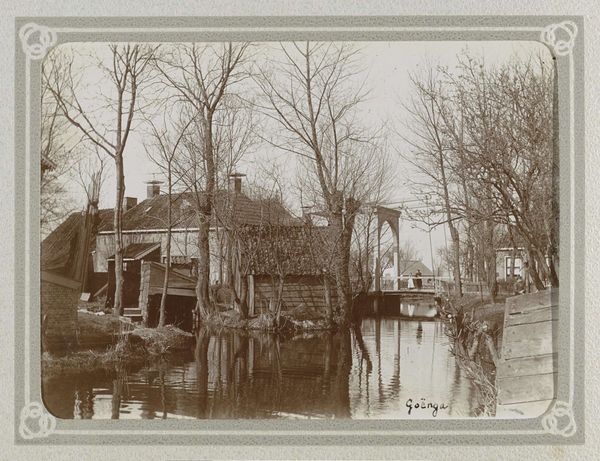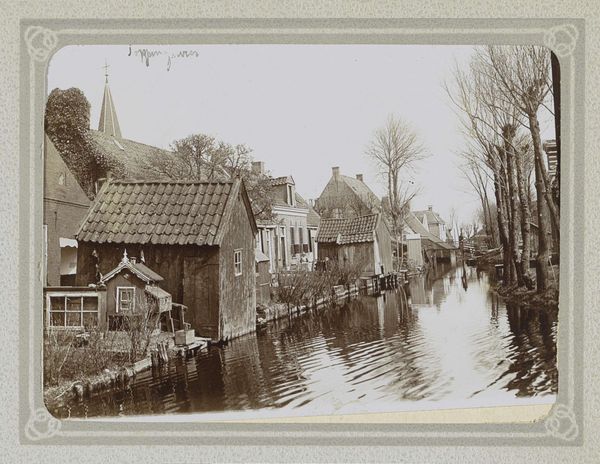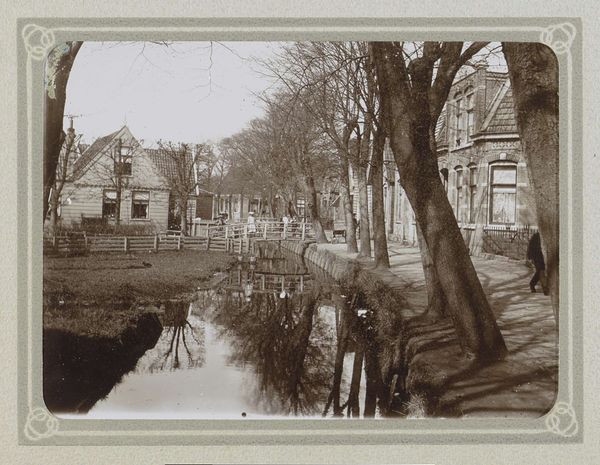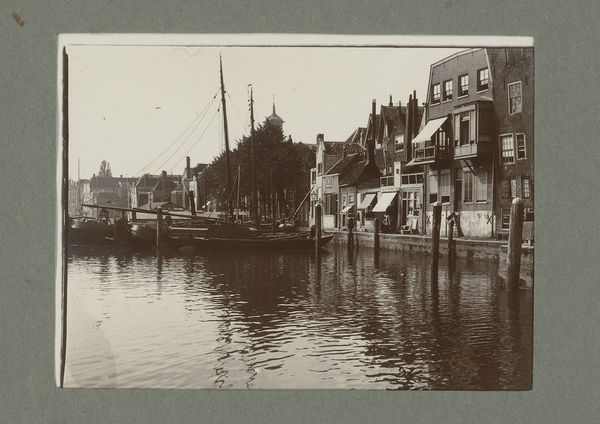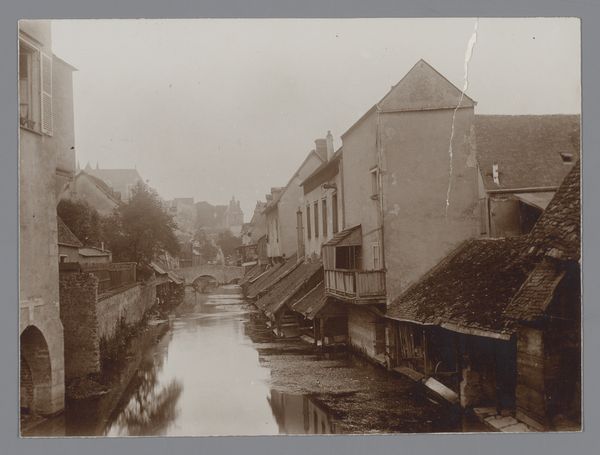
Dimensions: height 80 mm, width 111 mm
Copyright: Rijks Museum: Open Domain
Curator: What a fascinating image. This is "Huizen aan een water in Vendôme," taken around 1898. It resides here at the Rijksmuseum, capturing a moment in the town's history. Editor: It has such a melancholic stillness. The tones are muted, almost sepia, which gives the scene a feeling of being both present and far away. What strikes me is how the buildings seem to rise directly from the water. Curator: Indeed, it presents a very particular view of urbanization. Think of the rapid changes happening then—photography documented it all. The photograph, as a medium, offered a new way to represent reality and urban life specifically, differing significantly from painting’s more idealized depictions. Editor: It makes you consider who had the ability to immortalize the scene and for whom it was captured. Is it about the architecture, the reflection in the water, or maybe it's about something more subtle, like a record of ecological disruption? What stories aren't told when industrial presence infringes on the tranquility of nature? Curator: Precisely. Looking at the placement of the buildings alongside the waterway raises questions about the political and economic implications of this relationship. Who lived here? What was produced in these buildings? How did this proximity to water impact their lives? Photography as a tool was often commissioned by those in power or those who sought to assert a certain vision of the world. Editor: It evokes a strong sense of loss for a type of landscape vanishing beneath the rise of industrial activity. It serves as an uneasy, perhaps unintentional, reminder of ecological sacrifice. This photograph allows a discussion of the exploitation embedded within historical "progress." Curator: Absolutely, a poignant piece of material culture, encouraging us to rethink simplistic narratives of progress and modernity by centering issues of ecology and power, subtly foregrounding concerns relevant even today. Editor: This is where visual pieces really come into their power: the opportunity to reflect deeply, linking a moment frozen in the late 19th century to our contemporary reckoning with both human expansion and its environmental implications.
Comments
No comments
Be the first to comment and join the conversation on the ultimate creative platform.
